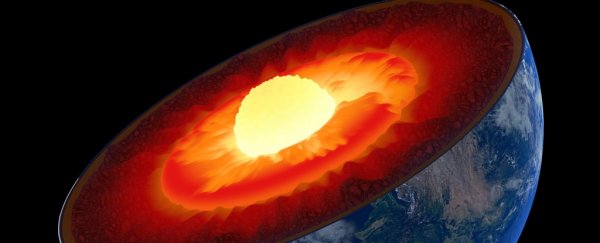Earth is in a constant state of flux. Over a geologic time scale of millions and billions of years, hot rocks rise up from the planet's molten core, and colder rocks sink.
But this creeping, eternal exchange is broken. Something has disrupted the system – called mantle convection – resulting in a freak geophysical phenomenon scientists call 'stagnant slabs'.
These slabs are giant chunks of subducted oceanic plate that gets stuck somehow on its slow descent down to Hades – almost as if it realised it was tricked into accepting a ticket to the underworld.
Now, a team of researchers from the University of Colorado Boulder thinks it has an explanation for this strange, stagnating mystery.
"You can think of this mantle convection as a big engine that drives all of what we see on Earth's surface: earthquakes, mountain building, plate tectonics, volcanos and even Earth's magnetic field," explains co-author of the new research, physicist Shijie Zhong.
"New research suggests that the story may be more complicated than we previously thought."
Numerous research efforts have studied the phenomenon over the past decade, but the science behind the stagnant slabs remains contentious.
In their new paper, Zhong and fellow researcher Wei Mao propose a new hypothetical culprit: a layer of obstructive material lying at the boundary of the planet's upper and lower mantle, located about 660 kilometres (about 410 miles) below the surface.
When the slabs stagnate, they spread out horizontally at this depth, which is known as the transition zone.
The phenomenon has been observed in the western Pacific Ocean, off the east coast of Japan and below the Mariana Trench. Unlike subduction zones around North and South America, these slabs in Asia "simply don't go down" Zhong says.
Using computer simulations with a global mantle convection model, the researchers calculated the behaviour of stagnated slabs near Japan and the Philippines.
Per the modelling, the team suggests a thin layer of less-viscous rock could be wedged in between the two halves of the mantle's transition zone, causing the descending slabs of oceanic lithosphere to get sidetracked on their downward voyage.
"If you introduce a weak layer at that depth, somehow the reduced viscosity helps lubricate the region," Zhong says.
"The slabs get deflected and can keep going for a long distance horizontally."
This obstruction in the mantle isn't permanent, the researchers think, and also is a relatively new arrival in Earth's interior.
Although, given the epic time scales involved in geophysical science, that only means it emerged sometime "in the last 20 million years", Zhong explains.
Nobody knows just when these stagnant slabs will break through this temporal anomaly – as the researchers predict – but given the overall flow in this area of science, don't go holding your breath.
The findings are reported in Nature Geoscience.
